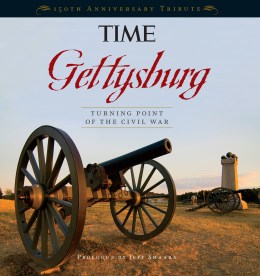
The last guns fell silent sometime around 6 on the evening of July 3, 1863. For three days, the massive, Armageddon-like conflict had raged south of the little crossroads town in southeast Pennsylvania, involving 75,000 Confederate and 83,000 Federal soldiers in all. The battle had left more than 50,000 casualties: almost four times more dead and wounded men than the total number of killed and wounded in the entire eight-year-long Revolutionary War. More casualties, in fact, than had been tallied in all previous American wars combined.
It was a Union victory, to be sure, but an immensely costly one. As Robert E. Lee and the badly battered Army of Northern Virginia retreated southward from Pennsylvania, ending the second and final Confederate invasion of the North, 7,000 slain men and 3,000 dead horses—an estimated 6 million lbs. of human and animal carcasses—lay strewn across the field in the summer heat. With 23,000 Union casualties alone, the town of Gettysburg, with a population of 2,400, now had some 10 times that number of dead and wounded men to care for.
One hundred fifty years on, it is hard to imagine an America at war producing dead and dying soldiers, in any number—let alone such enormous ones—with no federal relief organizations; no adequate federal hospitals; no dog tags or other formal provisions for identifying the dead; no procedures for notifying next of kin or for providing aid to the suffering families of dead veterans; no formal system for interring the dead; and no national cemeteries to bury them in.
Americans North and South had embarked on civil war little anticipating the scale of destruction it would inflict and little prepared to meet its imperatives. In important ways the almost unimaginable carnage of Gettysburg would mark a turning point, transforming forever the relation of citizen and state in America as the nation came to recognize and embrace the sacred obligation it owes to those who fight and die in its service.
“Sometimes,” the historian Bernard DeVoto once observed, “there are exceedingly brief periods which determine a long future.” It is commonplace to acknowledge that the four-year-long American Civil War was such a time. But the three-day battle of Gettysburg itself—along with the moral, political, cultural and rhetorical forces propelled into being by the enormous tide of death left in its wake—can be said to be one of the great founding moments in American life: an exceedingly brief point in time during which some key aspects of the American Republic we know today began to take a recognizable shape.
The Battle’s Toll
In the immediate aftermath of the Battle of Gettysburg, the work of burying thousands upon thousands of dead fell to the Union forces who held the devastated battleground—and to the stunned citizens of the town itself, who were implored to help the beleaguered Union soldiers, overwhelmed by the magnitude of the task before them. And many of the residents found themselves all but overwhelmed as well. John S. Forney faced the task of burying the 79 North Carolinians who had fallen in a perfect line on his farm; Lydia Leister, a widow, confronted 15 dead horses in her front yard on July 4.
Mass burials of enemy soldiers proceeded in the summer heat. Details of Union soldiers interred dead Confederates in trenches containing as many as 150 or more men, the decomposing bodies often hurled rather than laid to rest. Soldiers stomped on top of the dead, according to an Iowa soldier who observed such duty in the wake of the 1862 Battle of Shiloh, “straightening out their legs and arms and tramping them down so as to make the hole contain as many as possible.”






